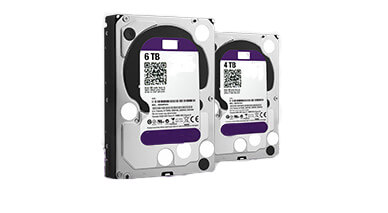Backup Software
Hard drives fail. Files become corrupted. Viruses hit. Laptops get dropped or stolen. And occasionally you just want to see an earlier version of a file you’re working on. If you’d rather keep, not lose, your photos, music, videos, documents, letters, and e-mail, then you need a backup program. You have several choices for this.
Local file-and-folder backup programs create copies on local drives or media, disk imaging software creates a snapshot of your entire drive, and online backup services automate uploading your data to secure off-site storage. In fact, you may want to use a combination of these. In this roundup, we present the two local software backup options—file and folder backup, and disk imaging utilities. For the third option, read Disaster-Proof Your Data with Online Backup.
The file-and-folder backup apps collected here protect only the files and folders that you specify, and typically give you the option of preserving one or more older versions every time it backs up the latest set of updated files. If you tell the backup program to keep multiple versions of MyNovel.doc or MySecretDiary.txt, you’ll be able to retrieve yesterday’s version if you decide you don’t like today’s version. With these programs, it’s a good idea to back up your whole Documents, Photos, Music, and Videos folders and all their subfolders. To this, you can add any other folders you consider valuable.
A drive-imaging program, by contrast, makes a complete backup of your entire hard drive or of one or more partitions. This backup is an “image” of the entire drive. When you want to recover a file—any file—from a backed-up image, you use the file-retrieval function in the drive-imaging program to pluck an older version of a file from the image and copy it to your hard drive. Since your image includes system files as well, if your system ever becomes unusable you simply run the drive-imaging program from a bootable emergency CD, and restore your entire drive from an image that you stored on a removable drive or a network storage unit. If you need a new hard drive, you simply install the blank drive, then restore your whole system from the backed-up image to the new drive. Obviously, a drive-imaging program requires lots of space for backups, because even a compressed image takes up almost as much space as the drive you back up.
How Backup Apps Work
The best file-and-folder backup programs work quietly in the background, making copies of your files either on a regular schedule or whenever a new version of a file is saved to disk. The apps can all back up files to a different folder on the same hard drive that contains the original file or, for greater safety (in case your hard drive fails), to a USB drive or a network location. Some can save to writable CDs or DVDs or even to remote FTP sites. Some can automatically stuff backed-up files into ZIP archives, and some can save encrypted backups so that other users on your network won’t be able to read your files.
All file-and-folder backup programs let you select any folder or a set of folders as a backup source. I especially liked the programs that also let me select additional prebuilt backup strategies—making it easy to back up my Windows desktop, or all of my Outlook Express or Windows Mail accounts and messages, or my Internet Explorer favorites. Genie Backup Manager Pro can even merge backed-up Windows Mail messages into my current mail store. It also comes with plug-ins that can back up and restore all your settings for common application programs.
Article Provided By: PC
![]()
If you would like liquidvideotechnologies.com to discuss developing your Home Security System, Networking, Access Control, Fire, IT consultant or PCI Compliance, please do not hesitate to call us at 864-859-9848 or you can email us at deveren@liquidvideotechnologies.com


Recent Comments